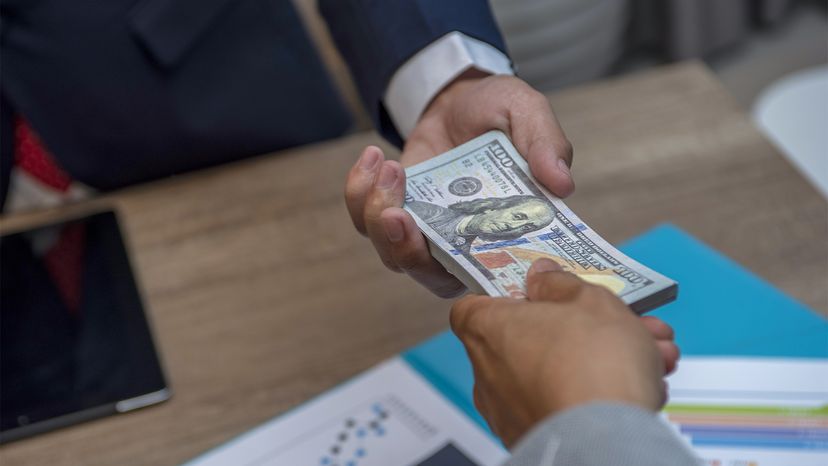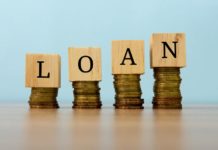 “A personal loan may be your best bet if you need some quick cash for a specific purpose and you don’t want to run up your credit card balance or ask a family member or friend for a loan. boonchai wedmakawand/Getty Images
“A personal loan may be your best bet if you need some quick cash for a specific purpose and you don’t want to run up your credit card balance or ask a family member or friend for a loan. boonchai wedmakawand/Getty Images
Maybe you want to consolidate your credit card debt or pay less interest on it. Or else you want to replace the fixtures and tile in your bathroom or have some capital to invest in a small home-based business. Or maybe you have any one of a million other potential situations where you need a little cash. How do you come up with it?
Increasingly, for many Americans, the answer is to take out what’s called a personal loan.
Though you’ll see slightly different definitions of the term, a personal loan generally means an installment loan, in which you get a chunk of money up front and agree to gradually pay it back, plus interest, through regular monthly payments.
One of the most important features of personal loans is that they’re usually unsecured, meaning that you don’t have to put up any collateral to get one. Instead, all you have to do is sign an agreement to make the payments, according to Rod Griffin, director of public education for Experian, one of the nation’s three major credit reporting companies.
"With an auto loan, you make payments in installments, but the loan is secured by the car," Griffin explains in an email interview. But with a personal loan, "you’re going to a lender and saying, I promise I’ll pay you back, and that’s it."
That makes a personal loan more like a credit card, where you don’t have to put up collateral either. But compared to using the plastic in your pocket, the interest rate for a personal loan may be slightly lower, and you may be able to borrow a bigger sum, because you’re agreeing to pay back a fixed amount of what you owe on a regular basis.
As Griffin explains, personal loans are a means of borrowing that’s been around for a while in various forms. But in recent years, they’ve become increasingly popular with both consumers and lenders. In 2015, he says, there were 656,000 personal loans given across the U.S., according to Experian’s data. By 2019, the number had soared to 1.3 million loans. American consumers had cumulative personal loan balances of $305 billion in the second quarter of 2019, and that amount is growing at an annual rate of 12 percent — double the growth of credit card debt, according to Experian’s data.
Strong Economy Means More Personal Loans
Personal loans tend to become more popular in a growing economy, in which there’s a lot of consumer confidence, which makes people feel more comfortable borrowing to get something that they want or need, according to Griffin. And the lenders — usually banks and other financial institutions — feel more confident taking a chance that borrowers will have the steady income needed to come up with regular payments over time. Conversely, when the economy is struggling, personal loan use could go down, as people get concerned about keeping their jobs and lenders grow more wary of consumers’ ability to keep up with payments.
Typically, the installments could stretch anywhere from 12 to 60 months, according to personal finance website NerdWallet.
Another reason personal loans are surging is the rise of financial technology, also known as fintech, which automates and streamlines the loan application process. Tech-savvy people can look for financing from a growing number of web-based lenders, who today make nearly half of all personal loans, according to Griffin.
"Fintech has made getting a loan easier," explains Todd Nelson, senior vice president of LightStream, an online lender that’s a division of SunTrust Bank. "There’s no need to go to a bank branch, fill out paperwork, then wait to get an answer and finally receive your funds. You can get a loan at your convenience via a computer, tablet or smart device."
For some borrowers, there’s also the appeal of transparency, explains Matt Schulz, chief industry analyst for LendingTree, an online marketplace that helps consumers to shop for and compare loans, including personal ones. "Unlike with credit cards, personal loans let you know right up front exactly how much you’ll pay over the life of the loan, what your monthly payment will be, and how long it will take you to pay it off," says Schulz. "If you’re living paycheck to paycheck that predictability can make it easier to budget. That’s a big deal, and I think that many people would actually be willing to pay more interest in order to have that clarity and transparency."
Some lenders will make personal loans for really big sums of money — as much as $100,000 — but typically, people are borrowing four-figure sums, according to Griffin. He says the average fintech loan is $5,548, while people who borrow from traditional brick-and-mortar lenders borrow $7,383.
Origination Fees and Interest
Origination fees, which the lending institution charges to complete the loan, vary from lender to lender. According to Experian, they’re typically around 2 percent of the principal. There also may be a prepayment fee if you pay back the loan early, since in that case the lender doesn’t make as much from the interest. Nerdwallet also provides this list of lenders who don’t charge origination fees.
If you’re comparison shopping, personal finance site Bankrate.com offers this list of institutions with the best personal loan rates, and includes info on the fees.
Of course, with a personal loan, like any other loan, you don’t just pay back the principal, or the amount you’ve borrowed. You’ve also got to pay interest on the money, which is how lenders make their profit. Typically, interest is higher on unsecured personal loans than it is on borrowing for which you’ve put up collateral, Griffin says. (With auto loans and home mortgages, the loan is secured by the vehicle or home that you’re purchasing.)
While personal loan rates can vary roughly from 6 percent to 36 percent, the average interest rate is 9.41 percent, according to Experian’s website. That’s significantly lower than the average 17 percent interest rate that credit cards charge on average.
Late Fees
If you’re late with a payment, you risk incurring a late fee, similar to what a credit card company would charge you. According to NerdWallet, fees can be either a dollar amount (typically $15 to $40) or a percentage of the payment due (usually 5 to 10 percent). But if you’re more than 30 days late with a payment, you risk getting reported to the big three credit bureaus, which can seriously harm your credit score.
Before you take the plunge and apply for a personal loan, there’s a lot for you to learn about them, including when and how you should use them, pitfalls to avoid and possible alternatives for getting the money you need. We’ll get into that in the rest of this series of articles on personal loans.
Now That’s Interesting
According to an Experian study, baby boomers have the highest average personal debt load per generation at $19,253. Generation X members come in a close second at $17,175, while millennials owe $11,819 and Generation Z members owe $3,526 on average.
































